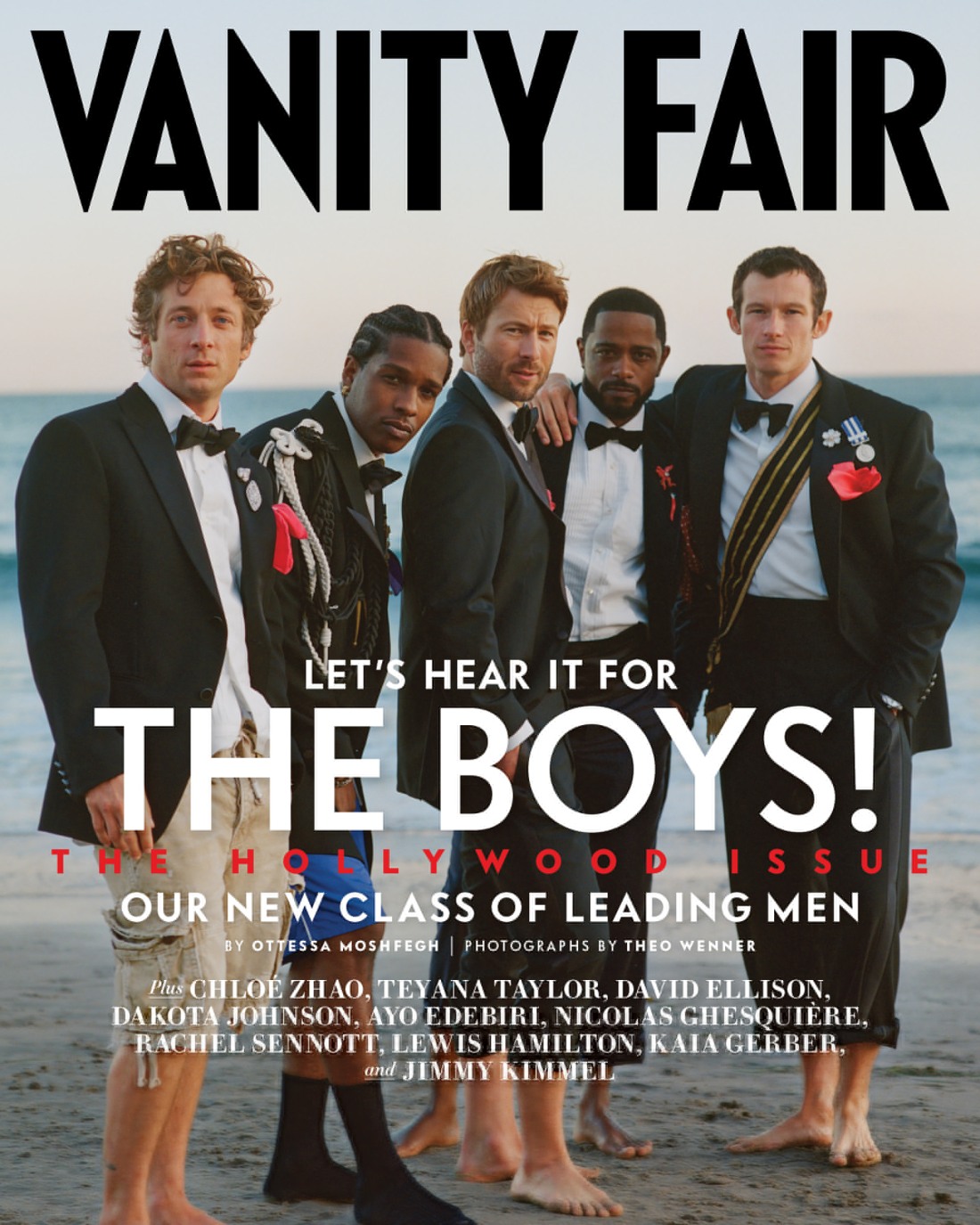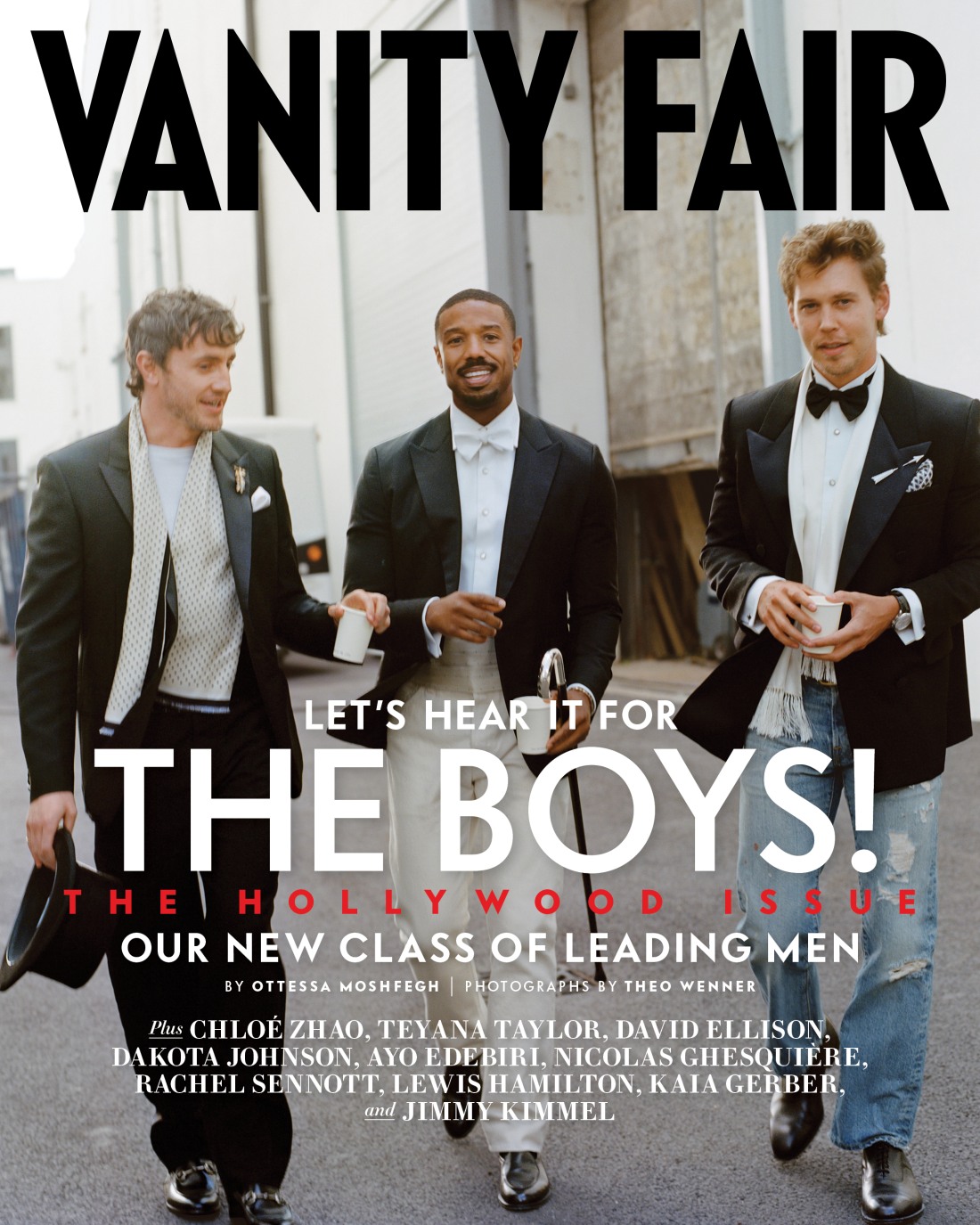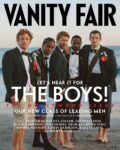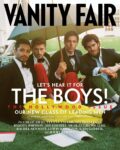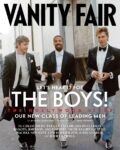Here are the covers for Vanity Fair’s “Hollywood Issue.” Come and sit down, children, because I remember when Vanity Fair’s Hollywood Issue used to come out in between the Golden Globes and Academy Awards. The old Hollywood Issue emphasized the performances of the year and highlighted actors and actresses who were rising talents and established stars. So, what’s annoying me this year? I think it’s the cover line “let’s hear it for the boys”? The boys, in this case, are a hodge-podge of 20-somethings, 30-somethings and even a few 40-somethings. Andrew Garfield is a whole-ass 42 year old with two Oscar nominations! The other “boys” featured: Paul Mescal, Michael B. Jordan, Austin Butler, Jeremy Allen White, A$AP Rocky, Glen Powell, LaKeith Stanfield, Callum Turner, Riz Ahmed, Jonathan Bailey and Harris Dickinson. Instead of “let’s hear it for the boys,” a better cover line should have been “the new masculinity,” because that was the focus of VF’s story:
Enter the “internet boyfriend.” The phrase has a wink, but the phenomenon is seriously embedded in our cultural DNA at this point. Today’s leading men aren’t unreachable idols. They feel like real people, very special people who hover just half an inch beyond our grasp. They’re still fantasy men, yes, but boyfriend-shaped: accessible, kind, vulnerable, and recognizably human. It’s not enough to watch these men working as actors on our screens. We want to know them, how they feel, what makes them tick. We follow their playlists, their breakups, their skin-care routines.
The internet is the perfect environment for forging parasocial bonds because it traffics in illusions and accessibility. And because of streaming, and Instagram, and YouTube, et al., we get to watch and rewatch our favorite moments from our favorite movies.
Let’s be honest: When Tom Cruise slid across the floor in socks and a shirt in Risky Business, he wasn’t sexy. But the studio sold him as God’s gift to women. Maybe we bought it because there were few alternatives. One is reminded of another male sex symbol, Marlon Brando. His voice in A Streetcar Named Desire was nasal and weird, but we still saw him as manly. And so was Cruise, though every part of his image has been calibrated: his shortness minimized in press photos, his unnerving intensity recast as ambition.
The approach has shifted now, where the difference between a male star’s sculpted pose and his unguarded presence is also the story of how masculinity has become expressive and safe at the same time. “Big d–k energy” doesn’t mean dominance, but presence, sincerity, and authenticity.
Still, any performance of authenticity is suspect—and these are, after all, brilliant actors. There’s a fine line between the man unashamed of feeling and the one demanding to be comforted. The former seduces; the latter regresses. The true internet boyfriend doesn’t want to be mothered. He already has a mother, and he loves her.
I had to double-check the byline to make sure Olivia Nuzzi wasn’t the author of this mess. No, it was written by Ottessa Moshfegh. Eh. Don’t get me wrong, some of these guys qualify as internet boyfriends or online obsessions. But I’m offended by the magazine putting Riz Ahmed – an Oscar winner and Oscar-nominated actor – alongside Glen Powell and saying, essentially, that they’re both the same and both are internet boyfriends. I also believe Michael B. Jordan has far surpassed all of these guys – he’s a full-fledged movie star, and he (more than any other guy of his generation) has the CV, the box office record, the heat and the drive to be the next Tom Cruise/Denzel/Tom Hanks. But it’s genuinely nice to see Harris Dickinson get some love – a very underrated actor who will be able to work forever because he can slip into basically any movie, any role, any genre.
Covers courtesy of Vanity Fair.
